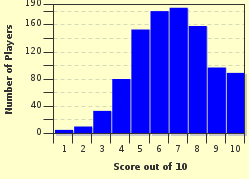Quiz Answer Key and Fun Facts
1. Stars are given letters which designate the temperature. The sun is classed as a yellow star, so is in which category?
2. Next we come to Mercury, the first planet from the sun, and the only planet other than Venus with no satellites.
Compared to Earth, how long is one sidereal day on Mercury?
3. Next stop: Venus! Venus is the brightest planet in our solar system. Why is Venus so bright?
4. Planet Earth, the planet in our Solar System that can support life. But the dirt and hard surface that we walk on is very different from the core of the Earth. What is the core of the Earth made of?
5. Now we come to Mars, otherwise known as the Red Planet because its surface is covered with a thin layer of iron oxide.
Which of these describes Mars's satellites, Phobos and Deimos?
6. Does Jupiter have noticeably different seasons?
7. We have now arrived at Saturn, the ringed beauty. Did you know Saturn's rings are not solid, but they are chunks of gas, dust and ice ranging from the size of sand to 1/2 a kilometer long?
What day of the week has a name derived from Saturn?
8. Now we are at Uranus, the planet that is tilted on its side! People believe something huge crashed into Uranus a long time ago, throwing it off its regular rotational axis.
What colour does Uranus appear from Earth?
9. We're nearly there - just one more planet! Neptune is very similar to Uranus - Uranus is just slightly bigger than Neptune.
What is Neptune's mantle made of?
10. We are at our last destination, the dwarf planet Pluto. The surface of Pluto is thought to be very icy. Pluto is a frigid cold place, and has at least four frigid cold moons.
What are the names of the first three to be discovered?
Source: Author
john_george
This quiz was reviewed by FunTrivia editor
crisw before going online.
Any errors found in FunTrivia content are routinely corrected through our feedback system.

